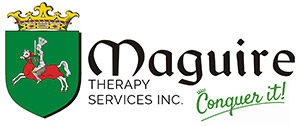Think back five years ago. What did you love to do? Were you a runner? A titan at the gym? Or did you just enjoy going for long evening walks?
What is stopping you from doing those same things now?
If you are hampered by an injury, lingering pain, aching joints, or lasting effects from an accident or surgery, physical therapy can help you get back to the activities you once loved. Curious? Call our office today to schedule an appointment with our physical therapist.
What is Physical Therapy?
It’s not hard to understand the role physical therapy can play in your recovery after surgery. Once your body has been repaired and the wound has been closed, the next natural step is to visit with a physical therapist to regain the function you once had. What most people don’t realize is that physical therapy’s usefulness goes beyond post-surgical rehabilitation. Physical therapy teaches patients how to achieve life-long health through prevention or management of most movement limitations. Think of a physical therapist as a movement specialist. If there is a physical condition limiting your ability to move, a physical therapist can help.
Conditions a Physical Therapist Treats
A physical therapist is qualified to treat problems with movement and balance anywhere in the body. However, these problems are generally categorized into three areas.
- Pre- and post-surgical rehabilitation. Most people are familiar with the role a physical therapist plays after surgery. Physical therapy can help you prevent any painful and limiting scar tissue buildup, regain your mobility and balance, increase your flexibility, and strengthen the affected area of your body. Recent studies have found that pre-surgical physical therapy shortens recovery time in patients who have cancer surgery, heart surgery or total joint replacement surgery.
- Acute injury. A physical therapist can help patients find relief from aches, pains and balance problems associated with an injury. After car accidents, athletic injuries or repetitive use injuries where the body’s structures are likely to repair themselves, patients are referred to physical therapy for pain relief, functional help and future injury prevention.
- Aches and pains. Over time, our bodies tend to break down with use. Arthritis, tendonitis, bursitis, and other chronic aches and pains can all be relieved with physical therapy.
How Physical Therapy Helps
We often don’t realize how much we give up when we are limited by aches, pains or injuries. A physical therapist begins by assessing your current movement and pain level. They may order imaging studies through x-rays, MRI or ultrasound to get a clear picture of the structures in your problem area. They will also put you through functional testing that measures your balance, movement ability and limitation.
Next, a physical therapist prescribes your treatment plan. This may include:
- Functional exercises to help you increase your strength and flexibility.
- Stretching to relieve pain and increase range of motion.
- Manual therapies such as massage and ultrasound to reduce pain and inflammation.
- Exercises you can do at home to increase the effectiveness of physical therapy.
Periodically, your physical therapist will evaluate your progress and make adjustments to your treatment plan. The goal is to help you get back to the activities you love as quickly as possible, with the best long-term results possible.
Still curious if physical therapy is right for you? Call our office today to schedule a consultation and find out how physical therapy can get you back to enjoying your life, doing the things you love.


